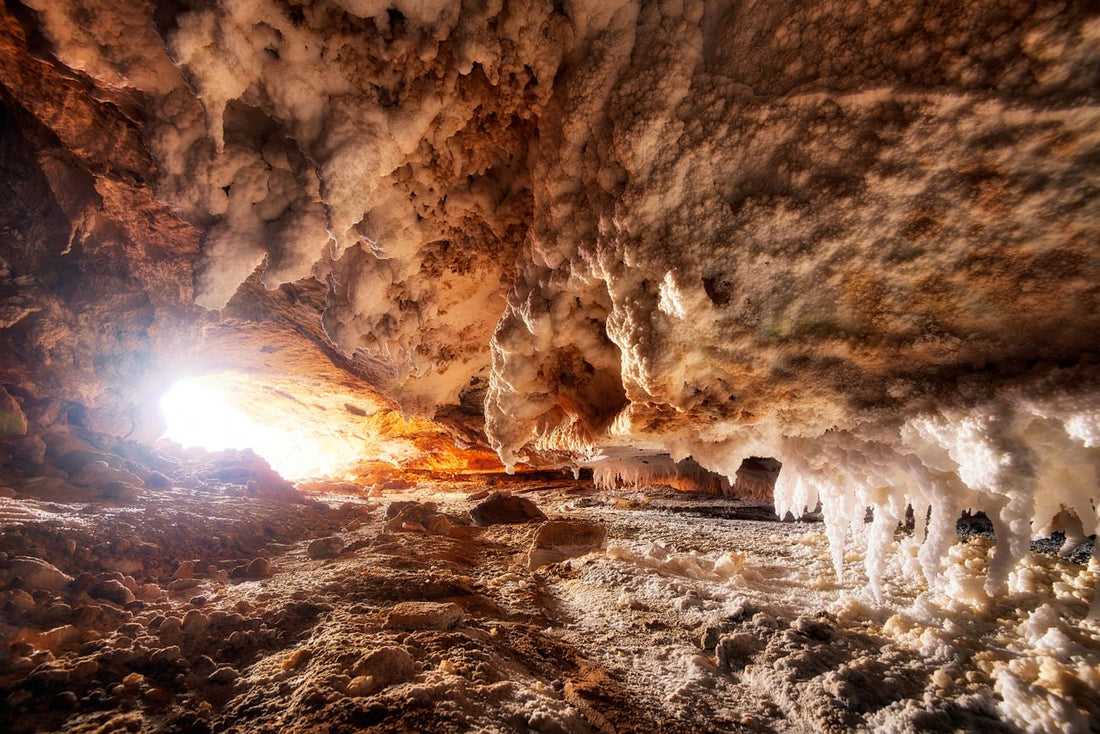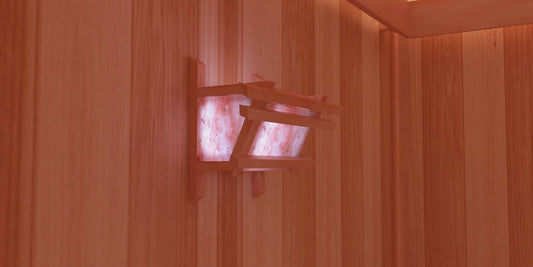There is a history about how salt was discovered; let's start from the beginning; Himalayan salt was generated in the past, specifically about 250 million years ago during the Jurassic period. It's found naturally in the Himalayan Mountains, and it has been prized as a valuable spice for centuries. Lava formerly covered the old sea beds within these mountains, where this salt is extracted. Toxins and other contaminants have not reached the salt because of the natural barrier produced by the lava. Several people confirm Himalayan salt is the cleanest salt on the earth because of its natural protection.
Composition
Himalayan salt is a type of halite containing specific trace elements that give it a reddish hue. The red intensity mainly depends on the amount of iron present in the salt. Most Himalayan salt is pink, but some can be orange, dark red, or in some rare cases, totally white.
Salt is composed of sodium chloride and occurs naturally in many foods, including milk, eggs, and shellfish, and also contains essential elements to human life.
The specific composition of Himalayan salt depends, but the average percentage of the elements goes as follow: Add table
| Elements | % in Himalayan salt |
|---|---|
| Sodium (mg) | 96.199 |
| sulfur (mg) | 1.790 |
| Calcium (mg) | 0.657 |
| Magnesium (mg) | 0.647 |
| Potassium (mg) | 0.586 |
| Chromium (µg) | 0.042 |
| Silicon (mg) | 0.032 |
| Aluminum (mg) | 0.019 |
| Iron (mg) | 0.016 |
| Selenium (µg) | 0.007 |
| Molybdenum (µg) | 0.004 |
Trace minerals, including potassium, magnesium, and calcium, make up the remainder of the salt. This is what gives the salt its pale pink color.
Geological formation
Skilled workers mine Himalayan salt with traditional methods in Pakistan's Salt Range mountains, which are located on the southern border of a fold-and-thrust belt beneath the Pothohar Plateau, south of the Himalayas. Himalayan salt is derived from the Salt Range Formation's thick coating of Ediacaran to early Cambrian evaporites.
The geological formation is made up of crystalline halite intercalated with potash salts, which is overlain by gypsiferous marl and interlayered with gypsum and dolomite, with occasional seams of oil shale that formed between 600 and 540 million years ago. The Salt Range was formed when these strata and the overlying Cambrian to Eocene sedimentary rocks were shoved southward over younger sedimentary rocks and degraded.
First discovery
Alexander the Great and his troops were the first to find Himalayan Salt. When the soldiers were traveling through the region in severe need of food and water, their fatigued and hungry horses led them right to the Himalayan mineral; the troops then chopped off large sections to carry with them on their journeys.
Later, Mughal Emperor Jalaluddin Muhammad Akbar of India mined Himalayan Crystal Salt for its rich minerals for the local people and businesses.
It wasn't until the late 1820s that the Salt Mines were fully functional. Today, it is a popular tourist destination, attracting about 300,000 tourists each year. The small copies of iconic sceneries, such as the Eiffel Tower, are breathtaking.
Start of mining
The Janjua people of the 1200s are the first to mention mining. The salt is largely mined at the Khewra Salt Mine in Khewra, Jhelum District, Punjab, Pakistan, which is located between the Indus River and the Punjab Plain on the foothills of the Salt Range hill chain. It is largely shipped in bulk and processed for the consumer market in other nations.
This salt was initially utilized as a preservative by the Himalayan people. It prevented their seafood and meat from deteriorating over an extended amount of time. As a result, this salt was quite popular for trading in the Nepalese lowlands. The Himalayans used yaks to transport salt via mountains, cliffs, and difficult roads to trade this vital commodity.
People discovered the healing properties of Himalayan salt caves after realizing that salt miners didn't tend to suffer from lung diseases. An intrigued Polish physician established a healing clinic inside a salt cave about 150 years ago, where a natural grotto was carved within the Wieliczka mines and is still used today. People with allergies, neurological issues, and rheumatoid problems can benefit by spending significant time in the historic caves of these Himalayan Salt Mines.
Industrialization
People widely recognized the salt's health advantages after that discovery. It was utilized by the locals to flavor and preserve their meals.
The first attempts to mine salt were conducted in the 16th century. It was a hazardous technique that limited the amount of salt extracted and traded.
The mining activity was taken over by the British in the late 1800s. Many of their strategies are still used today since they were so effective.
From there, the salt was utilized for various purposes, including food preservation and trading, as well as current applications. The famous Himalayan salt lamp, for example, was just created in 1980.
Today
In recent years, Himalayan salt has been popular due to its numerous advantages and applications; over 800 million pounds of Himalayan salt are mined each year in Pakistan.
Originally used to preserve food, it was later discovered to have health advantages and used to season meals. Himalayan salt has become popular as a decorative item, ranging from lamps to blocks of construction salt, kitchen boards, salt panels, and salt saunas.
Offering the option of having halotherapy and its benefits to us.




